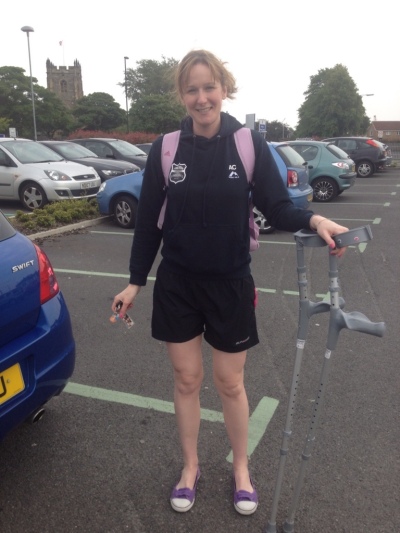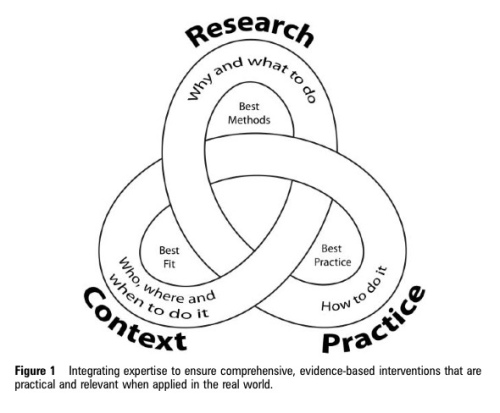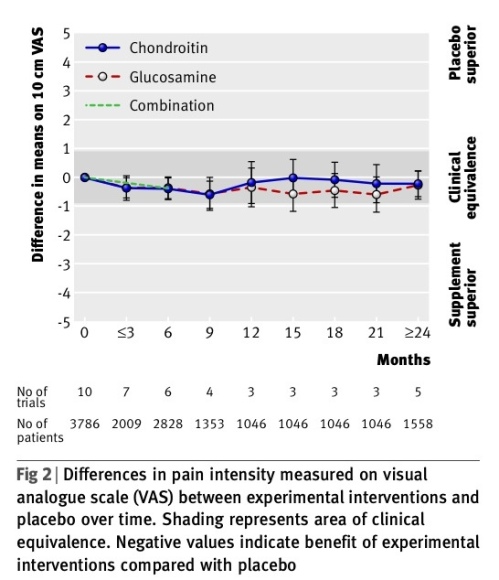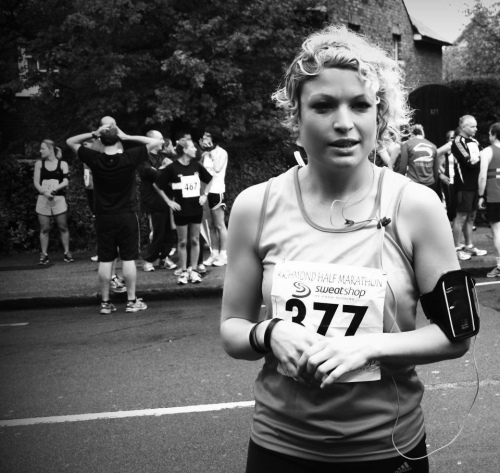Anji is a club runner for Tyne Bridge Harriers who has very kindly agreed to share her injury story with us. What shines through is her determination, positive attitude and commitment to staying fit, which she did largely through aqua training. For more information on this, visit Anji's blog where she has details of training and videos of deep water running. Now it's over to Anji…
When I signed to my club Tyne Bridge Harriers in January this year, I had no idea how my first year in my black and white vest would pan out. I raced as a TBH only 4 times before being struck down with a serious injury, and at time of writing I haven’t run in almost 4 months. Here is my journey.
After recovering from a stress fracture (left cuboid) in early 2011, running became my life. I had been out for 10 weeks and during that time I swam twice every day, read nothing but training plans and came back knowing that I just couldn’t be without running in my life. I completed my first half marathon in September 2011 and became addicted to the buzz of racing, but often carried niggles particularly in my feet and ankles. I ran with the motto “Determination Is Everything” and never let myself feel beaten. At the end of 2011 I had set a new 10kpb by over 4 minutes as well as running my first 5mile race and my first multi-terrain 10k.
Signing to Tyne Bridge gave me more confidence and joy in my running than I had ever had before, and I’m first to admit this new vigour led me to massively increase my mileage to feed my addiction. I had entered masses of races and felt I really wanted to prove myself in the ladies team. New pain in my right foot leading into my first ever relay race in February 2012 led me to run awkwardly and during training in early March, I found myself with new severe pain in the left. I stopped running for a week or so and saw physio who diagnosed a ligament sprain in early April following an incredibly painful 10k and a niggly half marathon all in the same week. Looking back, I did everything wrong. At the end of that 10k I couldn’t walk at all and I knew something was seriously wrong. Again, I took a couple of weeks off running and returned with hope that I would make it back for my race of the year, the Manchester 10k which I was running with my coach pacing me for what would hopefully be my first sub-45.
My few runs in the interim were niggly and ended in loads of pain again, and my frustrations led my GP into recommending I had an MRI scan. The scan results came back on May 15th(the week of Manchester) and confirmed that I had two acute stress fractures in my left heel as well as evidence of a healing fracture in the fourth metatarsal on my right foot. I was devastated. I just had no idea how I was going to cope with a long period out again. The MRI images were sickening and I spent quite a long time over the following weeks just looking at them in disbelief.
I saw three orthopaedic specialists in that first week and all of them thankfully agreed that I wouldn’t need to wear a cast. Instead I was given crutches and a walking cast “moon boot” and ordered that I couldn’t weight bear or even cycle for the first month. Heel fractures are treated like an egg shell where one crack can lead to another and they told me this could go on for up to 12 weeks. The first weekend I was in the boot I travelled to Manchester as my accommodation was already paid for and I was determined to still be there for my coach who was now going to run it sub-45 just for me. I had an extremely emotional day but I managed to meet one of my running heroes Nell McAndrew who was wonderful and very supportive about my injuries.
What happened next was a true cruel twist of fate that was to shape my rehab and recovery over the following few months. My coach and running buddy Rob came through the finish looking laboured and in pain, went missing for ages in the medical tent area and eventually came through in sheer agony. It is still hard to believe but the following day back at home, Rob was diagnosed with an acute stress fracture in the same foot as me. Now if you’re going to be injured with anyone, best be someone who already knows all of your moans and demands in training. Together we researched rehab options and following a few recommendations from people at the club, embarked on an aqua running programme. I had recently passed my Leadership in Running UKA qualification and decided to have a go myself at adapting an aqua running plan I had found online, as well as seeking advice from marathoner Aly Dixon who had previously been out for a long period with fractures in her foot and remained strong by using pool work. The plan was epic and included “long runs”, pace work, interval sessions, pyramid sessions and daily swimming or gym work focusing on upper body or core. The sessions were designed to mimic what you would do on the road as well as raising heart rate and keeping the legs strong. Deep water running using a floatation belt is often used by athletes when injured or for cross training, and at that stage it really was our only choice.
I’d be happy to share the plan I created with anyone reading this, but there are several good ones online worth looking at if you are going to be out for a while. My plan comes with something of a health warning. An example week would look like this:
Sunday: Pace session of 2 sets of 7×1:30 hard with 30 sec recovery
Monday: Interval session of 2 sets of 6×2:30 hard with 30 sec recovery
Tuesday: Long Run of 60 mins steady aiming to do a mile
Wednesday: Pyramid session 1min up to 5mins hard and down to 1 again
Thursday: Rest (gym work only)
Friday: Block session of 6x 5mins hard
Saturday: Swim only.
NB: All sessions include at least 5min warm up and cool down of steady steps.
‘Hard’ is aiming to get to high cadence of 180steps per minute.
The plan was progressive and led into sessions of almost 70mins with 60 at high cadence.
Aqua running became our new addiction and the burn in the quads as well as weekly photographs of my legs (!) showed us that it was working. The high cadence of 180 was initially a challenge but once it clicks it becomes natural and we now regularly finish the sessions with a minute “race” in which my PB is 227 steps with Rob’s at an epic 241!
Now I’m not going to lie to you and say that it has been easy. Aqua running can be soul destroying. Its tiring, the constant cycle of getting in and out of the pool (some days twice) 6 days a week with a very uncomfortable belt on has led to several quite explosive arguments between Rob and I, I have cried in the pool and on two occasions I have got out, taken the belt off and said “I cannot do this today”. It’s hard to keep focused sometimes when you have no way of really knowing if what you are focusing all of your energy, time and often money into is actually even working. But we supported each other and as we are coming to the end of the 9 week programme, we agree we are glad we’ve done this together.When we finish the plan this week we will have done 48 aqua running sessions and only one of those was apart.
Now the big question. DOES IT WORK?
Following a few setbacks, I am still partly using crutches and not cleared to run. My heel still swells every day and can be painful to walk on. I can cycle and I’m beginning to use the cross trainer, and I know that I’m nearly at the end of this awful time. Rob however is a different story. His fracture is almost fully healed and he is running a few times a week now, and FAST. Rob tells me the high cadence his legs are used to in the pool has translated now to the road and this style along with how strong his legs are now has led to fast miles and in his first race back, a 2mile handicap race at our club he recorded a new PB of 12:16. He inspires me all the time and keeps me believing that I will come back stronger and faster.
It’s 16 weeks today since that 10k which I finished unable to walk and for almost 11 of those weeks I have been on crutches. It has been one of the worst periods of my life and at times I have thought frequently that I will have to give up on the only thing I have ever really loved. I have taken myself away from the running world a few times and I have shut people out who I felt wouldn’t understand. I absolutely can’t wait to run again. I have ended up missing Sunderland 10k, Manchester 10k, Potters Half Marathon, Bridges of the Tyne 5 mile road race and the Great North 10k, and I’m slowly making peace with the fact that I probably won’t be ready for my beloved Great North Run on September 16th. I have remained an active part of my club, working for our Twitter page @tynebrharriers as well as working on registration and results for our inaugural road race at the start of July. I also recently worked as a marshal for Great Run and the GN10k in Gateshead. It can be emotional knowing I was meant to run, but the rewards have been immense. Whilst injured I have met Nell, Aly Dixon, Steve Cram, Sally Gunnell, Gemma Steel and Scott Overall, all through being part of races I was meant to run in, and all of them have signed my unused numbers so that I wouldn’t be tempted to burn them in a fit of frustration.I would urge people with long-term serious injuries to remain involved in racing wherever they can.
I really believe in the phrase “Run the mile you’re in” and not to look back or forward. It just so happens that this particular mile has been long, painful and frustrating. But it won’t be long now, and I just can’t wait.
Determination Is Everything.
You can follow Anji on Twitter; @enigmagirl81. Tyne Bridge Harriers are based in the East End of Newcastle, if you fancy joining them, you can do here.














